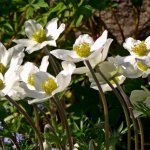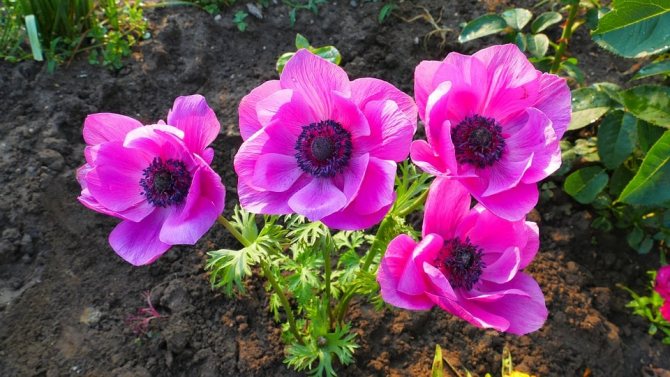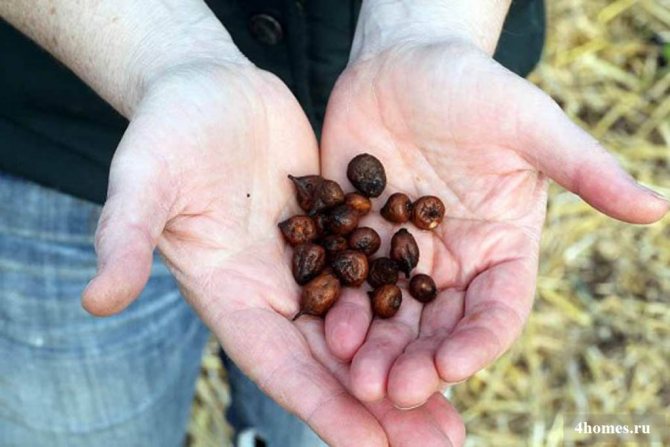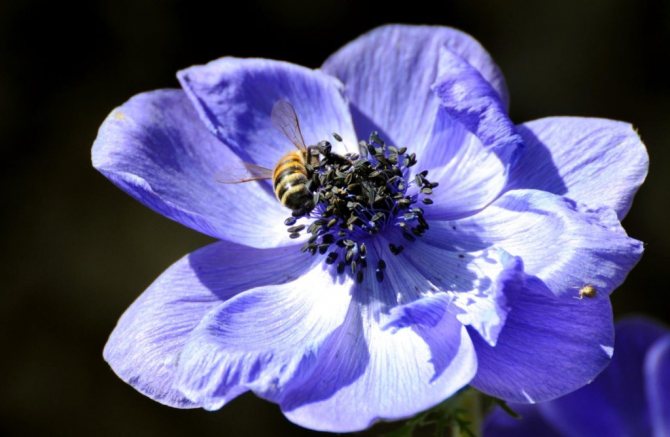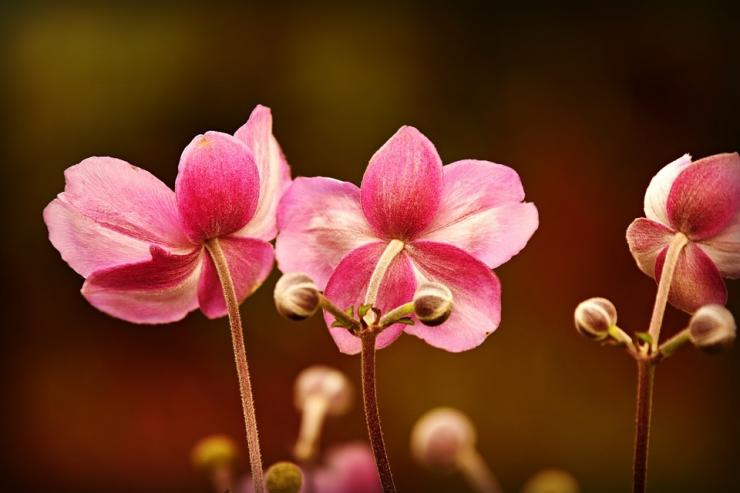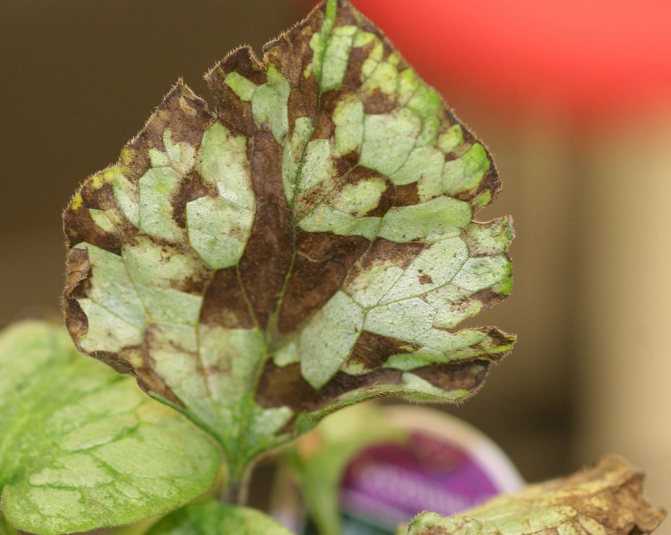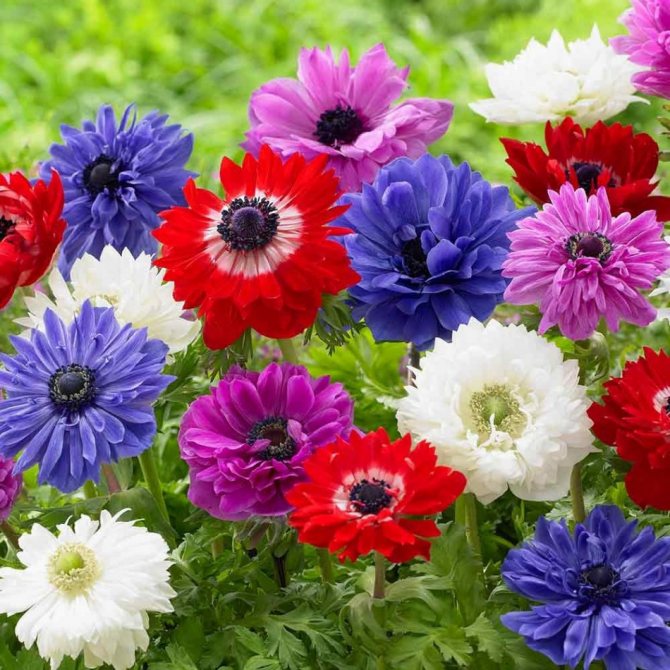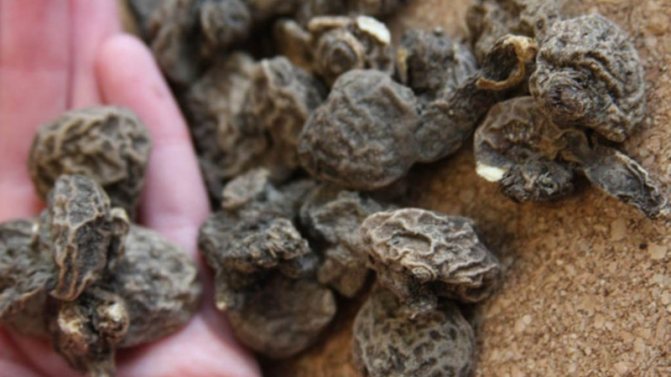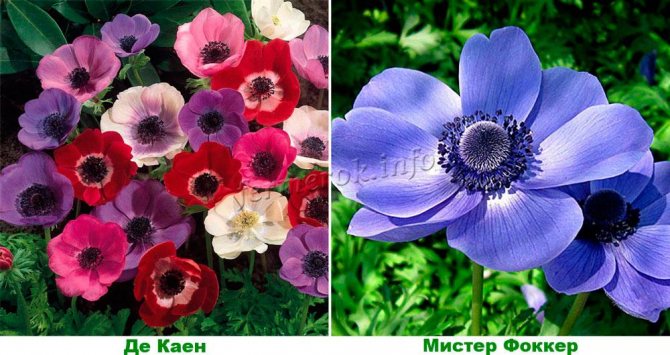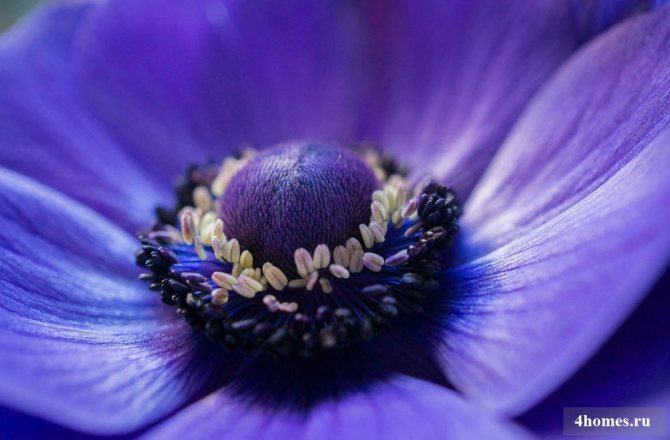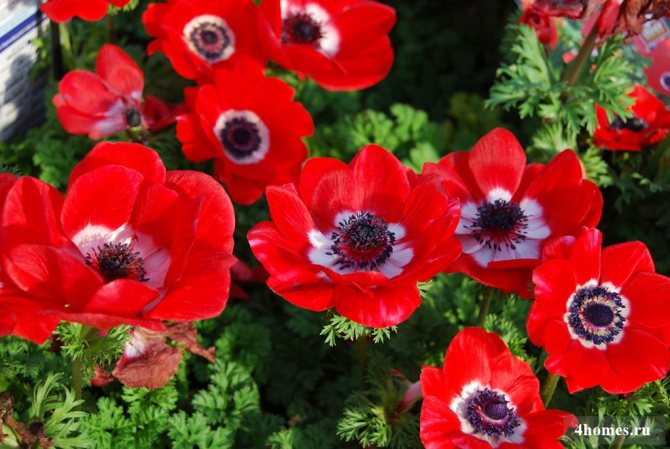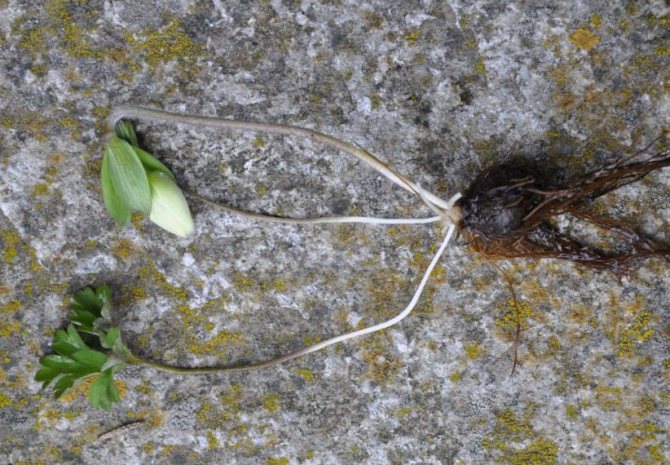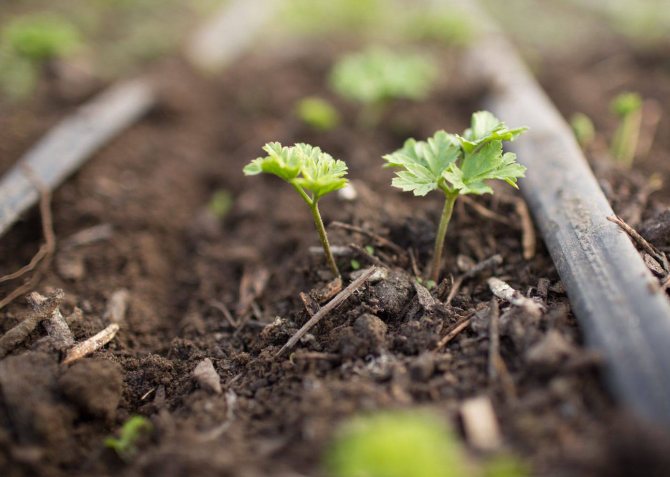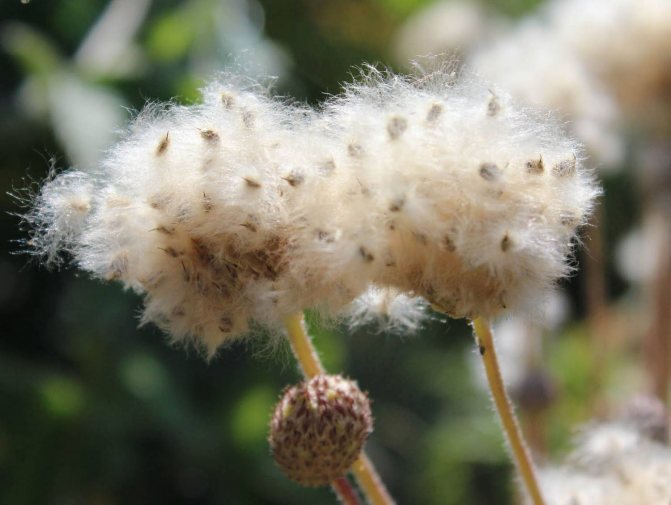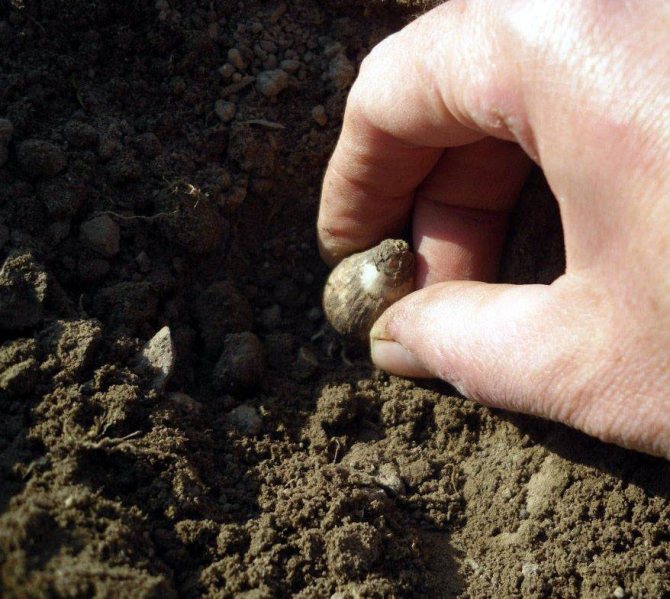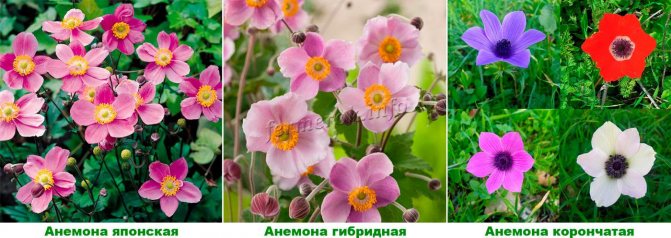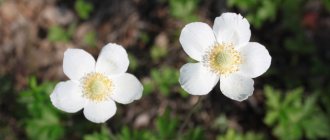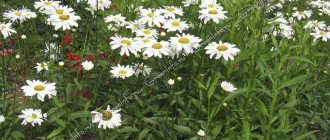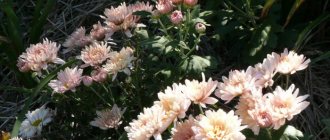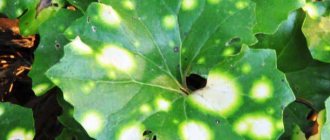Anemones - plants from the buttercup family with small beautiful flowers of various shades - will help to "paint" the flowerbed with all the colors of the rainbow. The perennial is often called the anemone among the people, and it is famous for its capricious disposition.
However, experienced gardeners are happy to use anemones when creating landscape compositions. Planting and care in the open field, a photo of the process of which is often presented in specialized magazines, should be carried out taking into account some features. If done correctly, the plant will delight with abundant flowering for many years.
We will talk about the principles of growing anemone today.

When to plant anemones: fall or spring
Anemones are planted outdoors in autumn and spring. Planting before winter is done in order to achieve earlier flowering dates. In order not to ruin the planting material and rejoice in the spring of the results of your labors, you need to provide the plant with special care. Anemone winters well under dense snow cover. Freezing of the soil is destructive for her, the site with plantings for the winter should be covered. When deciding to plant an anemone in the fall in a region with harsh winters, you need to understand that the risk of plant loss is very high.
Diseases and pests
Depending on the type of anemone, it can be capricious or unpretentious. Gardeners sometimes have difficulty growing flowers. Let's consider the most common problems that can arise:
- Viral diseases can be manifested by mottling of foliage, it becomes brown and growth slows down. In this case, diseased plants must be destroyed so as not to infect the rest.
- If a black bloom appears on the bottom of the leaves, and white on top, this indicates downy mildew... This often occurs when there is poor heat transfer, for example, when growing plants in a greenhouse. It is recommended to establish a ventilation, irrigation and lighting system.
- When attacks aphid, the leaves turn yellow and curl. When touched, you can see a sticky coating. Chemical preparations can save the anemone - Antitlin, Tobacco dust, Actellik.
- Injection nematodes Are small worms that infect the leaves and trunk. To get rid of them, you need to irrigate the plants with Fufanon or onion infusion (2 kg of chopped onions in a bucket of water, leave for 2 days, strain and spray).
When to plant anemones in autumn
The timing of planting anemones in open ground depends on climatic conditions. The optimum temperature during the rooting period is + 9 + 12 ˚С. In subtropical zones, this is best done in early November, in temperate latitudes - in late September and October. The flower reproduces in 2 ways:
- seeds;
- parts of the plant: tubers, dividing a bush or rhizomes.
Gardeners prefer to plant tubers on the anemone. This method allows you to get stable seedlings and flowers of good quality with proper care.
How to soak tubers
Before planting the tubers, anemones are sorted by size, rotten and moldy are discarded. There will no longer be a good harvest from them, no matter how careful the care is. It is recommended to soak them for half an hour in a pink manganese solution.Then place it in a woven fabric soaked in water or a root formation stimulator (Epin, Zircon, Athlete, Kornevin and others), cover it with a plastic bag so that an air cushion forms inside it and put it in a cold place where the temperature does not exceed + 6˚С - for example , in the refrigerator. In these conditions, they will begin to awaken, give the first roots and growth points.
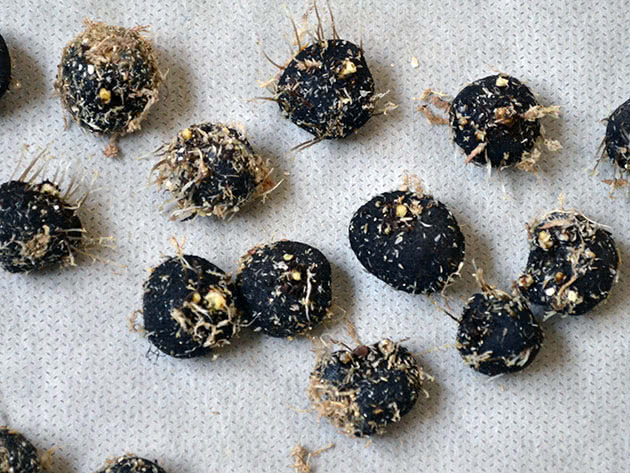

How to prepare seeds
For planting anemones in the ground, it is recommended to use freshly harvested seeds - they have a short shelf life. Their main drawback is low germination rate, about 25%. This indicator can be increased by exposure to low temperatures, so that the autumn sowing will only benefit them. The seeds are placed in a wet mixture of peat and sand and left to swell.
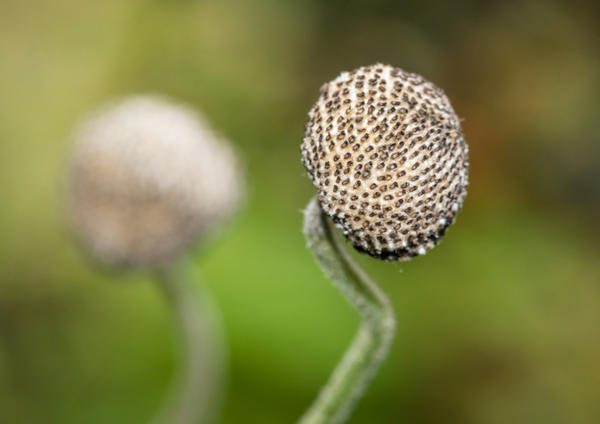

Planting capacity and soil
Of all the variety of containers for sowing, it is better to opt for wide and shallow boxes with holes in the bottom to drain excess moisture. The bottom layer is a drainage of small stones or broken bricks, above is a soil mixture consisting of peat, ash and coarse sand.
Planting anemones in autumn with tubers
After soaking, the tubers are planted in the ground. Depending on their size, the landing is made according to the following scheme:
- With a tuber diameter less than 1 cm, the distance between them is 10 x 20 cm;
- Diameter 1 - 1.5 cm - 15 x 20 cm;
- More than 1 cm - 20 x 20 cm;
It is undesirable to deeply deepen the planting material. It is recommended to prepare the hole, press the tuber into the soil, lightly sprinkle and water abundantly. After the sprouts appear, cover with earth completely.


Important! It is good to place the tuber in peat cups - then they will be in an optimal nutrient medium, it is convenient to plant them in the ground.
Planting anemone seeds
After swelling, the seeds should be placed in a container with a moist soil mixture consisting of sifted soil, compost humus and coarse sand, kept at + 5 ° C until sprouts appear. Then dig in the garden until the end of winter, covering with sawdust, straw or compost. This must be done before frost. No additional care is required. With the onset of warming, the container is removed.
Seedling care
Caring for anemones planted in autumn consists in regularly moistening the soil before placing it in the ground. After that, the seedlings must be covered with sawdust, straw, dry foliage or coniferous spruce branches.
Anemones: description of flowers, varieties with photos and videos
Anemone belongs to the Buttercup family. It is found in temperate regions on the plains and in the mountainous regions of both hemispheres. All species and varieties bloom in different ways and at different times of the year, which confuses even experienced gardeners.
By flowering time, anemone is divided into spring and summer (or autumn). This difference is due to several factors, the first of which is the species and variety, and the second is the region where the flower grows. Spring ones are distinguished by grace and a wide range of pastel shades. Spring anemones are ephemeroids, that is, the cycle from aboveground flowering is short - they bloom in May and from July they pass into a dormant stage.
Popular species and varieties
Among experienced gardeners and amateurs, 3 decorative types of anemones are popular:
| Species / varieties | Short description |
| Kind: Anemone tender (A. blanda) |
- Blue Shades;
- Violet Star
- Pink;
- Charmer;
- Radar;
- Rosea.
Among the advantages is unpretentiousness. A. Blanda grows in any soil. Ideally, plant it along with large perennials that bloom in May, when the anemone leaves. Thus, you can get a blooming flower bed from early spring to late autumn. Disadvantages - low germination rate. From 10 planted tubers 2-3% germinate.
- St. Brigid Mixed (Double);
- Admiral;
- Lord lieutenant
- Mount Everest
- Mr. Fokker;
- The Governor;
- DeCaen Mixed;
- Bicolor;
- Hollandia;
- Sylphide.
This is a versatile plant that adapts to any soil and is not whimsical to neighbors in a flower bed. It is recommended to plant the Japanese anemone for beginners, as it quickly takes root and does not disappear if you forget to water it or fertilize it incorrectly.
It is recommended to choose a type for planting based on the climate:
- in Moscow suburbs almost all types of this plant can be grown;
- on the Ural - forest, crown, Japanese;
- in Siberiawhere the temperature in winter is low, it is better to give preference to species with high frost resistance - Anemone hupehensis, Amemone x hybr> Choosing a place for planting and preparing the soil
It is important to ensure proper planting and care of the anemone. To do this, you need to perform several activities:
- Dig up the soil after the winter season in order to destroy the parasites and larvae that hibernated there.
- Before planting, the soil must be fertilized with organic fertilizing. You can use banana peel infusion or compost.
- With regard to the place, it is better to choose partial shade, because anemone does not like shade, but they also do not feel comfortable in the sun.
- The soil is mixed with sand - this is the ideal soil for anemone.
How to plant anemones outdoors in autumn
Before planting anemones in the fall, you should decide on a permanent place where they will grow, prepare the soil.
Pick-up location
Anemones like slightly elevated places, excluding stagnation of water in the soil. You need to choose a spacious semi-shaded area, protected from drafts. A year after planting, the anemones grow strongly - this should be taken into account when choosing a site. The correct choice of site is the key to good germination and development of healthy plants.
Important! The degree of illumination depends on the variety. Oak and forest species (Altai, Shadow, Lyutichnaya, Dubravnaya) prefer deep shade.
How to prepare the soil
Anemones are grown in fertile, light, loose soils - loamy, sandy loam. They grow poorly on acidic soils, a neutral or alkaline medium (pH 5.5 - 7.5) suits them. Before planting the plant in the fall, loosening is performed, peat, mature compost, and wood ash are introduced for fertilization. If the soil is too heavy, sand should be added to it, if it is too acidic - dolomite flour.
Tuber hole
The size of the hole for anemones depends on the tuber. The depth, as a rule, should not exceed 2-3 of its height, width - 30 cm. Humus and ash are laid out at the bottom of the hole. After planting, the soil is covered with mulch.
Landing
Planting anemones is no different from other flowers. The main conditions are prepared seedlings or rhizomes and soil fertilized with organic matter.
Sowing seeds - seedlings and their preparation
It is difficult to grow anemones from seeds due to the low germination rate. If you choose good quality fresh seeds and sow them in good soil, then perhaps a quarter of them will sprout. This method is used extremely rarely.
To increase germination, experts recommend stratifying seeds. This is the process of cold treatment of seeds. The seeds are mixed with sand in a 1/3 ratio and sprayed with water daily. When they swell, soil and top dressing are added to them in the container. When the sprouts hatch, they need to be taken out into the snow and covered with sawdust.


Landing in the ground
Tubers or ready-made seedlings from seeds are planted in the ground. To plant the tubers, you need to correctly determine the growing point. To do this, they are placed in water, and after swelling, a tubercle will be visible from which the stem will break through.
Outdoor care for anemones
Caring for anemones in the fall comes down to moisturizing, gentle loosening, and treatment against pests and diseases.
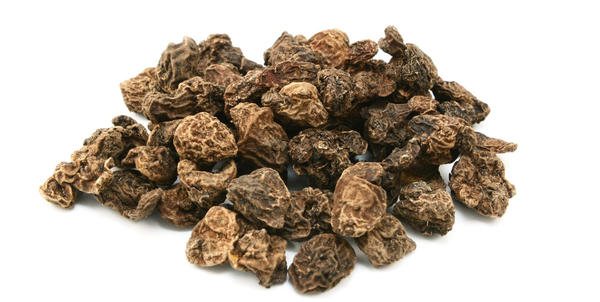

Top dressing
In autumn, organic fertilizers are applied to the soil. It should be remembered that for anemones they do not tolerate manure. It is better to make compost from the foliage of fruit orchard trees. In order for the care to be complete, it is necessary to add mineral fertilizers containing potassium and magnesium to the soil.
Watering
Watering the anemone in the fall should be as needed, no more than once a week. Care should not be excessive: excess moisture will lead to decay of the planting material and death.
Preparing for winter
The main concern of the gardener is to protect the ground from freezing.For this, the plantings are covered with a thick layer of dry plants, branches or specially designed cover materials made of polypropylene fiber (agrospan, spunbod, spantex).
Disease prevention
Anemone is susceptible to certain diseases. To prevent their occurrence, plants require preventive care: they are treated with biological products Planriz, Fitosporin-M, Rovral.
Pest control
Anemone is defenseless against aphids, South American leaf miner, thrips, greenhouse and tobacco whitefly. The drugs Aktara, Aktellik, Iskra are effective against them. Processing must be done in the early stages of the lesion. If a plant is affected by a nematode, it is utilized as a whole and is not used for propagation. A solution of metaldehyde will help with snails and slugs. Care consists in the modern detection and elimination of the problem.


Pruning
As a rule, caring for an anemone does not require pruning, even if it is dug up in the fall. In the subtropics, tall species are cut to ground level. In areas with severe winters, the stems are left, the plant is covered.
Reproduction of anemones
Best of all, anemones reproduce vegetatively: by dividing rhizomes, dividing a bush, root suckers. The best time for this type of breeding is spring. Sowing seeds gives good results if done in the fall.
Healing properties
The anemone flower is used in folk medicine due to its properties:
- has antifungal effect;
- stops the growth of cancer cells;
- thins blood, strengthens blood vessels;
- has anti-inflammatory and disinfecting properties.
Infusions are used for cardiovascular diseases, pneumonia, pathologies of the digestive system. When using products based on anemones, you need to be extremely careful, because it is toxic. It is preliminarily recommended to consult with specialists so as not to harm health.
Transplanting anemones in autumn
Flowers can easily be transplanted at any time - even during the flowering period, the optimal season for this is spring. If necessary, you can transplant the anemone in the fall, only you need not to miss the moment when the aerial part of it dries up. In August-September, the site with anemones must be dug up, the underground parts must be removed and planted. No special care required. The transferred plants must be watered abundantly, covered.
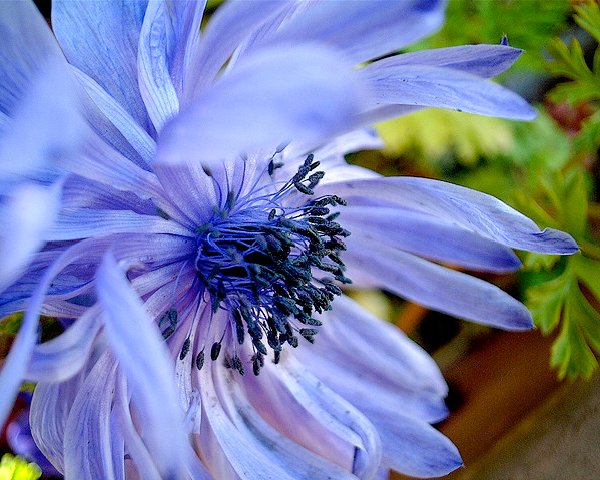

Tips from experienced florists
It is advisable to dig up anemones after the aerial part has completely dried out. Sudden wilting, as well as yellowing of the foliage, indicates that there is not enough nutrients in the soil. It is necessary to feed the flowers with potassium-phosphorus fertilizers. Also, the leaves can turn yellow from a lack or excess of moisture.
The ideal daylight hours are 12-14 hours. If the flowers are grown at home, additional lighting must be provided.
Growing anemones is not difficult. It is enough to follow all the rules of planting and care.
Bloom
The flowering time of spring anemones is late May or early June.


Summer ones bloom from mid-July, autumn ones delight with a variegated color of petals from late August until the first frosts.
Even small clumps of planted anemones attract attention.
Graceful long stalks rise above the bushes, forming a light snow-white or variegated cloud of airy flowers of pink, lilac, crimson, blue, violet.
Caring for an anemone after flowering
Flowering lasts about two to three weeks, then the tops of the flowering stems are crowned with the formed green boxes with seeds.
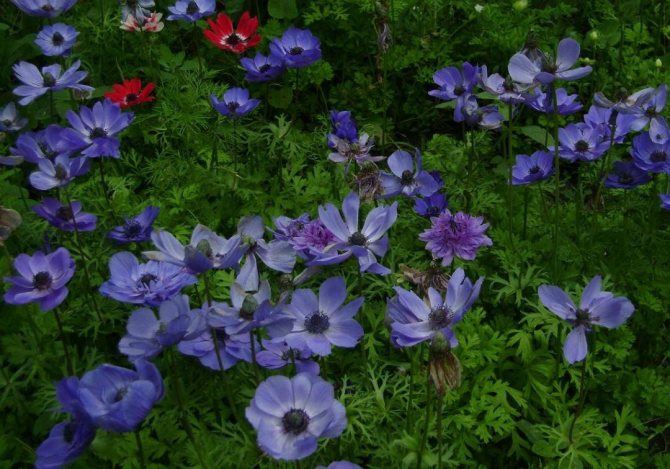

Florists try to cut them before ripening, because self-seeding of anemone is extremely aggressive towards other inhabitants of the flower bed and the entire garden.
The plant quickly conquers space for itself, if it is not limited in distribution.
When it becomes necessary to collect seed, they try not to miss the moment of opening the bolls.
Fluffy lumps that envelop the seeds are instantly picked up by the wind and carried over considerable distances.
Disembarkation rules
It is possible to plant anemone seedlings in pots only at the onset of a favorable moment. It can be determined by the fact that the seedlings have formed two true leaves. The rush to transplant will not benefit the anemone, since in the future you will have to pay more attention to it during the departure. During the planting of flowers in the fall, they need protection from the cold from fallen leaves or hay. When growing anemone flowers from seeds, you will have to be very patient, since the first flowers will appear only in 3-4 years.
If it is necessary to ensure the flowering of anemones throughout the season, then you should be very careful when choosing varieties. They should differ in flowering time, and they should be planted at the right time.
Answers to frequently asked questions from readers
Is it possible to drive out an anemone at home?
Anemones tubers can bloom right in the apartment. They are planted in pots and then placed in a cool place (about 16 ° C). When sprouts appear, the air temperature is raised to + 18 ... + 20 ° С. For good flowering, plants should be highlighted.
Why did the anemones have yellow leaves?
Yellowing of the leaves may indicate insufficient plant nutrition.
In this case, it is recommended to feed the anemone with complex mineral fertilizer. It is worth paying attention to soil moisture. Leaves turn yellow with excessive and insufficient watering.
The anemone is covered with spots. What to do?
Anemones become spotted due to nematodes. The main task in this case is to save healthy plants. Bushes affected by the pest must be dug up and destroyed.
Plant lifespan
The aerial part of the anemones dies off after each flowering period. At the same time, the rhizomes and tubers of plants remain viable. In the wild, anemones have been growing for decades.
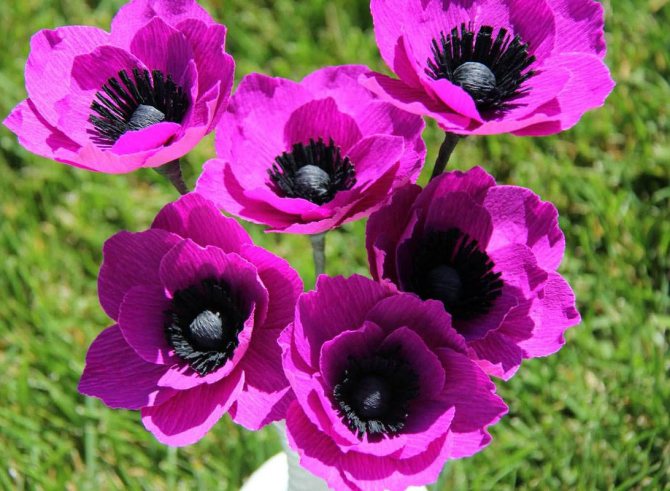

Extending the lifespan of the anemone is allowed by creating good wintering conditions. In cold climates, you need to dig up the flower (the anemone may otherwise die). The procedure is repeated every fall. The plant is planted back into the ground in the spring.
general characteristics
Anemones have gained popularity in many countries of the world and their beauty can delight many. The plant has single flowers with a diameter of 3-8 centimeters. They can be of a simple type, terry or semi-double, and their color is very diverse.
The flower has a straight stem, the height of which can reach 80 centimeters. There is very little foliage on it. All leaves are at the bottom of the stem and are collected in a basal rosette. It looks very nice and unusual.
Anemones bloom twice a season... First in the spring - in April-May, and then at the end of August, and the flowering period can last until October. Of varieties of anemones can be distinguished:
- Anemone tender (this species includes several varieties, the most common of which is blue) - it reaches only 5-10 centimeters in height and looks very miniature;
- Dubravnaya anemone is not very common on the territory of Russia, however, it is an unpretentious species. The height of these flowers can be in the range of 20-30 centimeters and their color is predominantly white. Terry specimens are found;
- Buttercup anemone - flowers are similar to buttercups, mostly yellow, unpretentious and can grow in any type of soil. The height of the bush can be 20-25 centimeters. Terry varieties may be present.
This is not the whole list of plant varieties. There are also Japanese anemone, hybrid, crown and many others.
Spring types of anemone
1 of 4


Anemone multi-dissected - perennial 15-50 cm tall with expressive pinnately dissected emerald-colored leaves and small flowers up to 4 cm in diameter, which bloom from early spring to mid-summer. The variety Pink silk with delicate petals is especially attractive, although other forms with lilac, yellow, white flowers are also decorative.
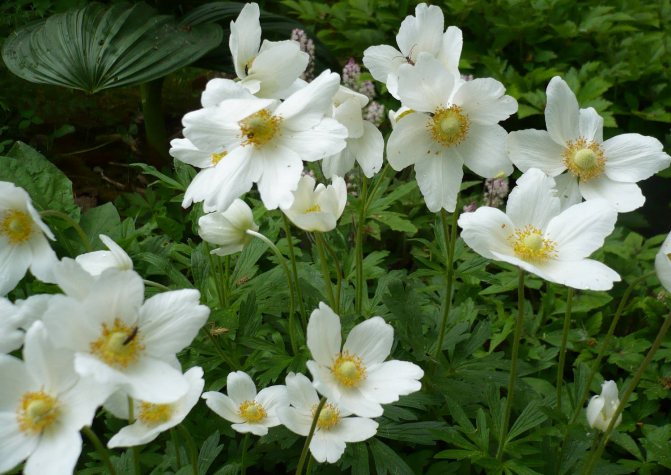

Forest anemone is a herbaceous plant with straight pubescent stems about 50 cm tall with whorls of two-, three-part leaves covered with fluffy hairs and white or cream flowers with a circle of 5-7 cm. Beautiful forms of open ground with large and double corollas have been bred.
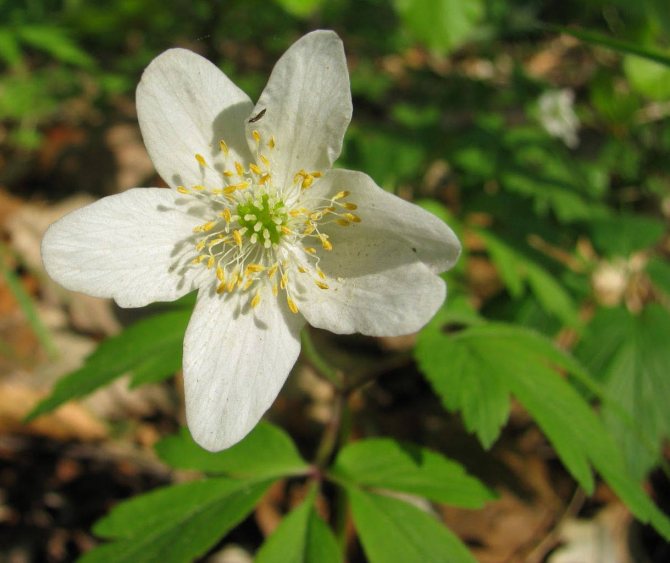



Terry blue anemone is a popular variety in garden floriculture with bright dark blue flowers.
Growing features
There are a large number of species and varieties of anemones, while some of them are unpretentious to growing conditions, while others, on the contrary, should be provided with special care. And the thing is that some species are tuberous, while others are rhizome. It is the rhizome species that are distinguished by their unpretentiousness and ease of care, while the tuberous ones can suffer greatly if they are not properly looked after. There are several features of growing such a flower that you need to know:
- In dry and very hot weather, they must be watered.
- In autumn, flowers should be fed with complex mineral fertilizers, and organic matter should be introduced into the soil before planting and in the process of active growth or flowering.
- To prevent the plants from freezing, in winter they should be covered with a layer of fallen leaves.
- The easiest way is to propagate this plant by seeds, while they are sown before winter, or by root suckers in spring.
Appearance
Anemones are herbaceous perennials, rhizome or tuberous, with vertical pagons from 30 cm to 80 cm in height.
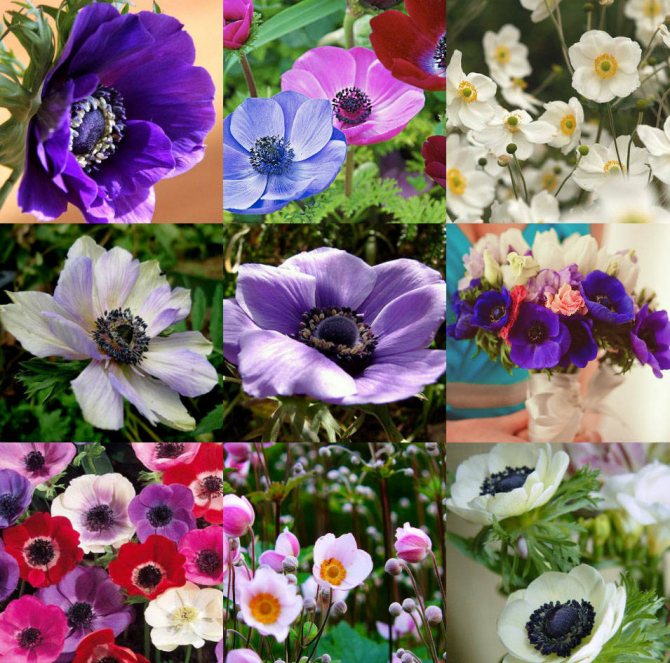

Basal double-trifoliate or pinnately dissected leaves on elongated petioles are collected in a rosette, stem leaves are few in number.
Flowers with a circumference of 3-8 cm are solitary or less often grouped in a semi-umbellate inflorescence.
The colors of the petals are different - from white to pale pink, lilac, blue and scarlet. Many double and semi-double forms and varieties have been bred.
The fruits look like miniature nuts, naked in some species and pubescent in others, often adapted to spread by the wind, occasionally by animals.
Most anemones are winter-hardy, tolerate cold well and practically do not freeze out.
They are popular in landscape design, used for planting in rock gardens, mixborders, borders, for decorating parks and home gardens.
Content
- Listen to the article
- Features of growing anemone
- Planting preparation Soil preparation
- Seed preparation
- Preparing anemone tubers
- Planting tubers
- Reproduction
- Anemone blanda

